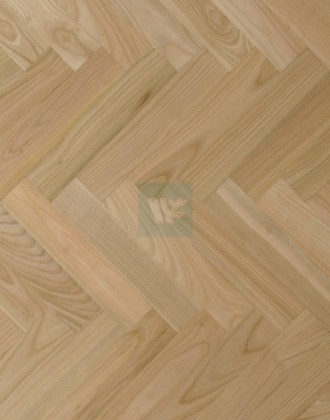Wild Cherry
Wild cherry, also known as black cherry or Prunus serotina, is a hardwood species that is native to North America. It is widely used in furniture making, cabinetry, flooring, and decorative applications. Here are some characteristics of wild cherry wood:
Color: The heartwood of wild cherry is reddish brown to deep red in color, often with a golden luster. The sapwood is usually lighter in color and can be up to 3 inches wide.
Grain: Wild cherry has a straight to irregular grain, with a fine to medium texture. The wood may have a distinctive curly or wavy figure, which is highly prized for its aesthetic value.
Density: Wild cherry is a medium-density hardwood, with an average density of about 35 pounds per cubic foot (560 kg/m3). This density makes it lightweight and relatively easy to work with
Durability: Wild cherry is moderately durable, with good resistance to decay and insect attack. It is also relatively stable and does not shrink or swell much with changes in moisture content.
Workability: Wild cherry is easy to work with, with good machining and finishing properties. It sands and finishes well, and takes stains and finishes evenly.
Uses: Wild cherry is used for a wide range of applications, including furniture making, cabinetry, flooring, veneer, and decorative items such as paneling and moldings. Its attractive color and figure make it a popular choice for high-end furniture and architectural millwork.
Overall, wild cherry is a versatile and attractive wood species that offers a unique color and figure. Its moderate density and good workability make it easy to work with, and its durability and stability make it suitable for a wide range of applications.

Wild cherry, also known as black cherry or Prunus serotina, is a hardwood species that is native to North America. It is widely used in furniture making, cabinetry, flooring, and decorative applications. Here are some characteristics of wild cherry wood:
Color: The heartwood of wild cherry is reddish brown to deep red in color, often with a golden luster. The sapwood is usually lighter in color and can be up to 3 inches wide.
Grain: Wild cherry has a straight to irregular grain, with a fine to medium texture. The wood may have a distinctive curly or wavy figure, which is highly prized for its aesthetic value.
Density: Wild cherry is a medium-density hardwood, with an average density of about 35 pounds per cubic foot (560 kg/m3). This density makes it lightweight and relatively easy to work with
Durability: Wild cherry is moderately durable, with good resistance to decay and insect attack. It is also relatively stable and does not shrink or swell much with changes in moisture content.
Workability: Wild cherry is easy to work with, with good machining and finishing properties. It sands and finishes well, and takes stains and finishes evenly.
Uses: Wild cherry is used for a wide range of applications, including furniture making, cabinetry, flooring, veneer, and decorative items such as paneling and moldings. Its attractive color and figure make it a popular choice for high-end furniture and architectural millwork.
Overall, wild cherry is a versatile and attractive wood species that offers a unique color and figure. Its moderate density and good workability make it easy to work with, and its durability and stability make it suitable for a wide range of applications.
12" Sweet Cherry Herringbone HD10
300x60x19 Rich & Colourful
Top quality Solid Cherry wood parquet herringbone blocks. The blocks are suitable to fit in many patterns including herringbone, square, brick, dutch..
£57.60/sqm Ex Tax: £48.00
12" Cherry Low Herringbone HS44
300x70x16 Intense Looking
Solid Cherry wood parquet thermo treated for plain colour and better durability. Beautiful rich light red shade wood with nice grain lines. Made out o..
£55.20/sqm Ex Tax: £46.00
3 ¾" Prime Cherry Flooring DD34
95mm Wide Lovely Hardwood
Superior quality 100% Natural Sweet Cherry wood flooring in narrow (95mm) classic American style strip boards. Untreated - pure wood surface to sand a..
£75.60/sqm Ex Tax: £63.00




